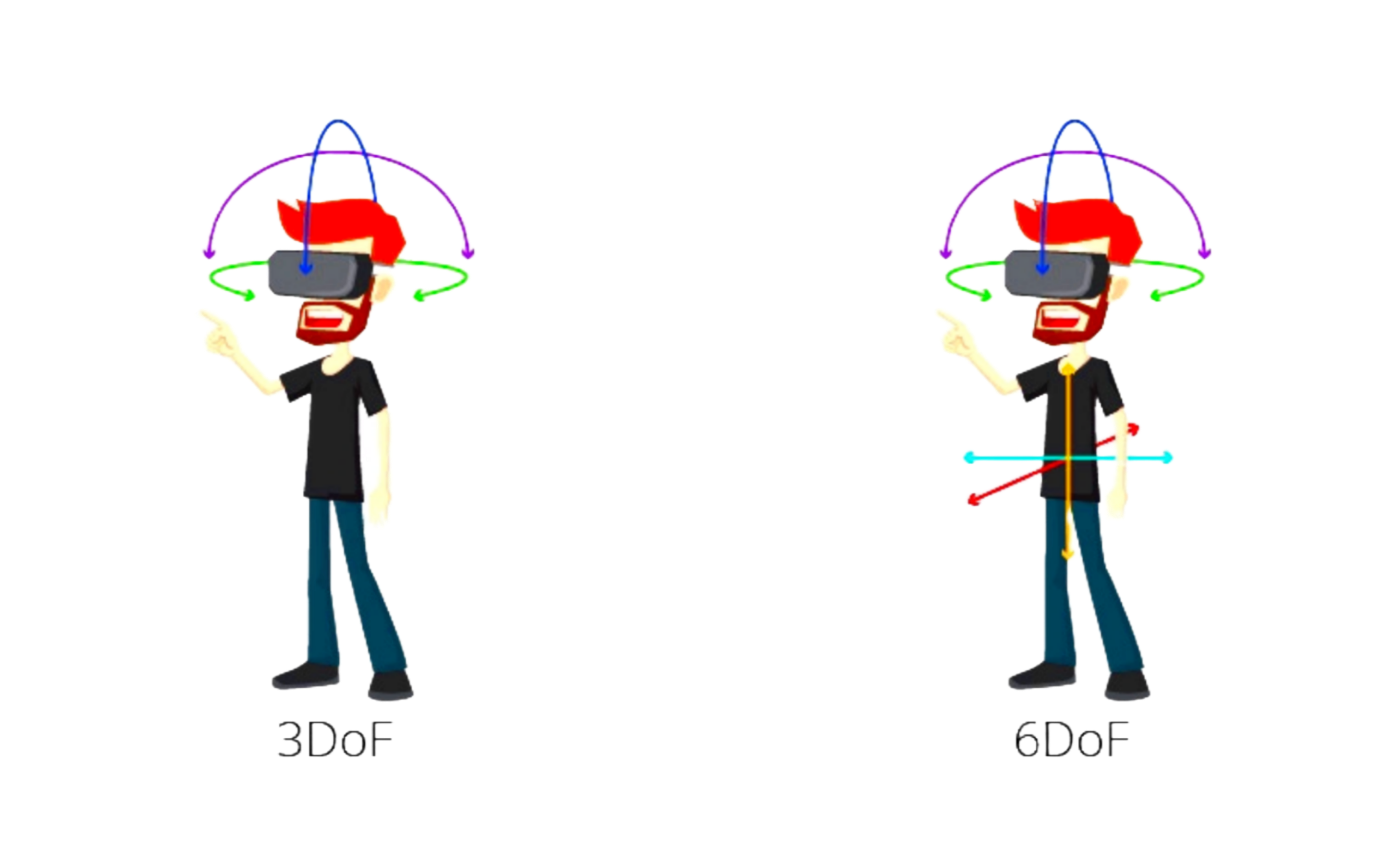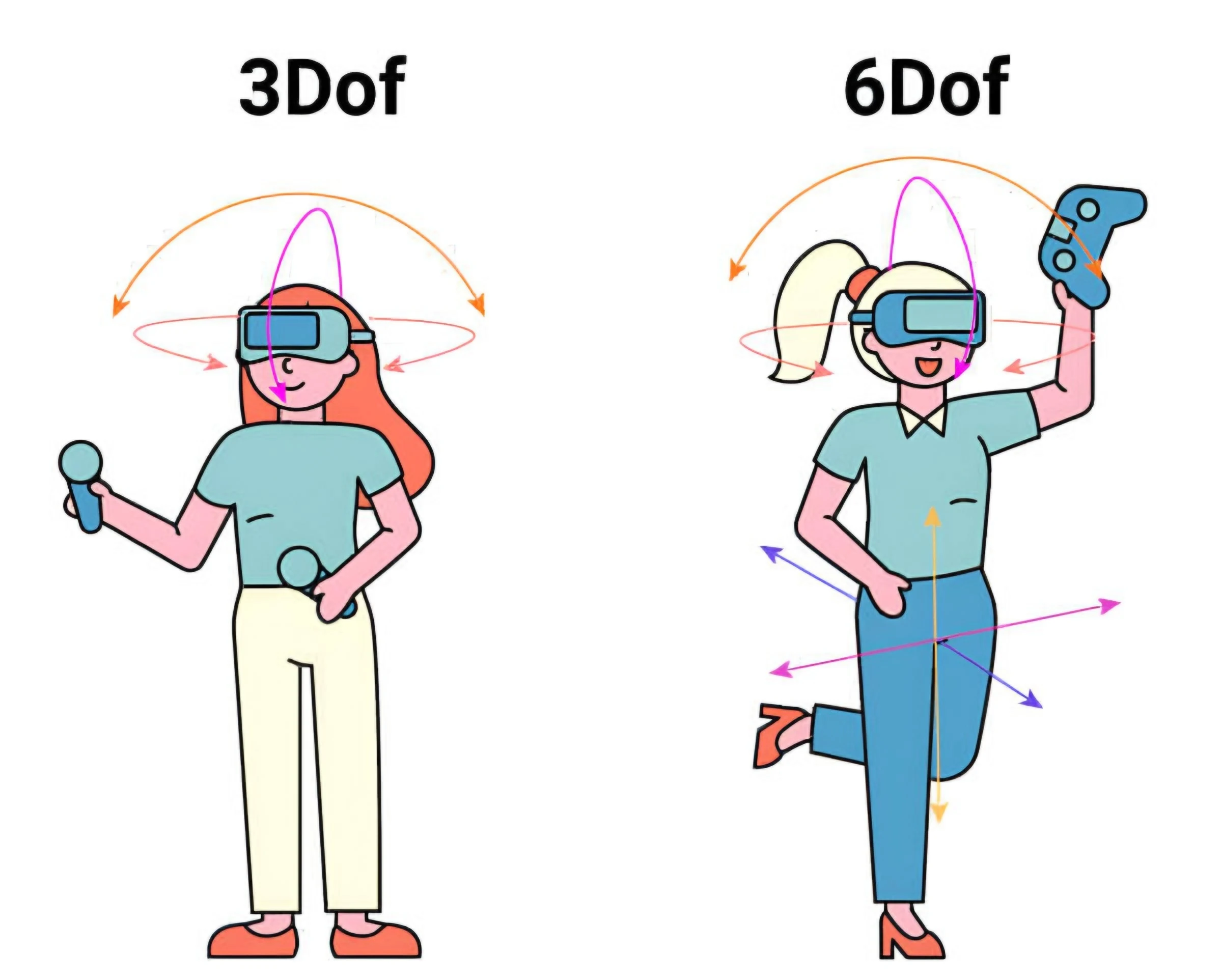In the realm of virtual and augmented reality, the degree of freedom (DOF) plays a pivotal role in shaping the user experience, enhancing the feeling of authenticity and seamless interaction within the virtual realm. Research indicates that higher degrees of freedom correspond to increased immersion and realism for users.
Understanding the degree of freedom in virtual and augmented reality glasses: the difference between 3DOF and 6DOF
Virtual reality headsets are categorized into two main types of degrees of freedom: 3DOF and 6DOF. With 3DOF, the headset tracks head movements along three axes, limiting the user to a fixed viewpoint without the freedom to explore their surroundings. Conversely, 6DOF allows the headset to track both head and body movements across three additional axes, enabling users to navigate freely and engage with the virtual environment more authentically.
The versatility of multiple degrees of freedom in virtual reality headsets provides users with a holistic experience, facilitating natural movement and interaction within the virtual environment. The choice of the appropriate degree of freedom depends on the intended application of the headset; while 3DOF may suffice for passive activities like watching movies, 6DOF offers an optimal experience for immersive gaming and active engagement.
Leading augmented and virtual reality headsets that offer 6 degrees of freedom, such as Meta Quest 3, represent significant advancements in technology and user experience within this rapidly evolving field.
Degree of freedom in the world of virtual and augmented reality: the difference between 3DOF and 6DOF
In virtual reality (VR) and augmented reality (AR) glasses, degrees of freedom (DoF) refer to the number of dimensions in which a user can move within a virtual or augmented environment.
In general, there are two main types of degrees of freedom:
1. Rotational DoF Degrees of Freedom:
- These degrees represent the ability to rotate the head around the x, y, and z axes.
- These degrees represent the ability to rotate the head around the x, y, and z axes.
- x (Pitch): Rotate the head up and down.
- y (Yaw): Rotate the head from left to right.
- z (Roll): Rotate the head around its central axis.
2. Degrees of Translational DoF:
These scores represent the ability to move the head in three-dimensional space.
- x (Surge): Move forward and backward.
- y (Sway): Move left and right.
- z (Heave): Move up and down.
- 3DoF:
- These degrees allow thrust control only (twist and turn).
- Typically used in simple VR applications, such as watching movies or playing stationary games.
- 6DoF:
These degrees allow to control orientation and position (winding, turning and movement).
Used in more complex VR and AR applications, such as gaming experiences, workouts, and simulations.
Importance of degrees of freedom in VR and AR:
- Feeling of being: The greater the degree of freedom, the greater the user's sense of being within the virtual or augmented environment.
- Interact: Degrees of freedom allow the user to interact more naturally with the virtual or augmented environment, such as picking up and moving objects.
- Applications: Degrees of freedom are used in a variety of VR and AR applications, such as gaming, medical education and training.
Examples of degree-of-freedom tracking techniques:
- Infrared (IR) tracking: Infrared cameras are used to track the movement of consoles or VR glasses.
- Electromagnetic (EM) tracking: Magnetic fields are used to track the movement of controllers or VR glasses.
- Optical tracking: Cameras are used to monitor the movement of marked points on consoles or VR glasses.
- Internal tracking: Built-in motion sensors are used to track the movement of controllers or VR glasses.
Degrees of freedom are an important concept in VR and AR, as they affect the user's sense of presence and interaction with the virtual or augmented environment. Various technologies are used to track degrees of freedom, allowing for the development of more realistic and attractive VR and AR applications.




